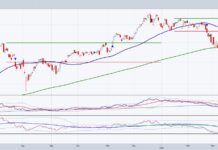 Ned Davis, founder of the very well-respected Ned Davis Research firm has some interesting thoughts on the suspected large amount of cash that is commonly reported to be on the sidelines and still waiting to be invested. Davis goes right to the data as shown in this MarketWatch post by Mark Hulbert to find that there may not be as much “cash on the sidelines” as many would like to believe:
Ned Davis, founder of the very well-respected Ned Davis Research firm has some interesting thoughts on the suspected large amount of cash that is commonly reported to be on the sidelines and still waiting to be invested. Davis goes right to the data as shown in this MarketWatch post by Mark Hulbert to find that there may not be as much “cash on the sidelines” as many would like to believe:
Davis looked for this cash in four areas. In each case, current levels are some of the lowest in history:
- Money market funds. This is the most obvious place where cash would be stored. But as a share of the total market cap of the entire stock market, current money market fund assets are very low by historical standards: 11.3%. Before the 2007 market top, the lowest this share got was 12.7%. Davis calculates that the current percentage is in the historical zone associated with annualized stock market returns of only 0.4%.
- Households’ free liquidity. Davis next focused on non-equity liquid assets, net of liabilities. As a percentage of the stock market’s total market cap, this free liquidity stands at 39.8%. That’s not only lower than what was registered at the 2007 top, it’s the lowest in 60 years with only one exception: the top of the Internet bubble. According to Davis, the current percentage is in the historical zone associated with minus 0.2% annualized returns.
- M2 money supply. Davis expanded his net even more broadly. As a percentage of total market cap, however, M2 money supply also is lower than at any time since the 1920s — again with just one exception: the top of the Internet bubble. It’s currently in the historical zone associated with 0.8% annualized returns.
- Credit balances in brokerage accounts. There was $285.6 billion of such balances at the end of March, which certainly looks like a big number. But Davis reminds us that there also is a record amount of margin debt in those same brokerage accounts — $476.4 billion. The net number is the lowest in history, according to Davis.
While Central Banks across the globe have been keeping the cash spigots on, providing stimulus to their respective financial markets, consumers don’t appear to have as much left as market pundits allude to. So if the market continues higher, perhaps it will be due to asset rotation and capital flows as opposed to money flowing in from cash reserves.
Thanks for reading.
The information contained in this article should not be construed as investment advice, research, or an offer to buy or sell securities. Everything written here is meant for educational and entertainment purposes only. I or my affiliates may hold positions in securities mentioned.
Follow Andrew on Twitter: @AndrewThrasher
Read more from Andrew on his Blog.
Any opinions expressed herein are solely those of the author, and do not in any way represent the views or opinions of any other person or entity.








